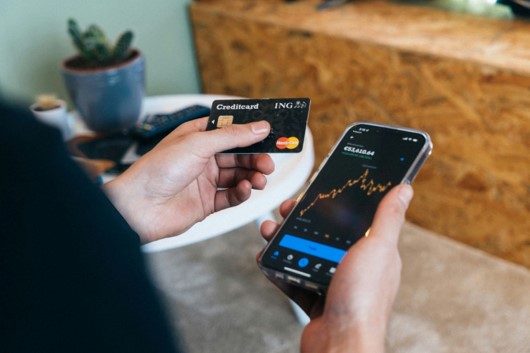Chargeback fraud is a critical concern for merchants worldwide, with businesses facing an average of $3.75 in costs for every $1 lost to chargebacks. This alarming statistic highlights the hidden costs associated with dispute management, which can include administrative fees, loss of merchandise, and potential penalties.
But what is a chargeback from a bank? It is a process used by a cardholder with their bank to dispute a transaction and obtain a refund. This tool, while designed to protect consumers, can often be exploited and lead to chargeback fraud. For that reason, businesses must understand the basics of chargeback fraud to safeguard their operations.
In this post, we’ll look into the concept of chargeback fraud, including what it is, how it works, and how businesses can prevent it by implementing effective strategies to protect against these risks.
What is a Chargeback Fraud?
Chargeback fraud is when a consumer makes a purchase with their credit card, receives the product or service, and then requests a chargeback from the issuing bank under false pretenses. The consumer may falsely reject a transaction, claiming they either didn’t authorize or receive the goods or were unsatisfied in receiving what was described.
This fraud act results in the consumer retaining the products or benefits of the service without paying, while also forcing the merchant to incur financial losses and administrative costs.
What are the Types of Chargeback Fraud?
Chargeback fraud is typically categorized into three main types: merchant fraud, true fraud, and friendly fraud. Each type represents different challenges and risks for businesses.
1-Friendly Fraud
Friendly fraud is often the most challenging to detect and prevent because it involves legitimate customers acting fraudulently and can account for between 40% and 80% of all eCommerce fraud losses. This type of fraud is particularly deadly because it abuses the protections designed to safeguard consumers, turning them into tools for fraud.
2-True Fraud
True fraud occurs when a transaction is made using stolen credit card information. The actual cardholder did not authorize the purchase, and once they notice the fraudulent transaction on their statement, they request a chargeback. This type of fraud is a major concern with Internet usage, where credit card information can be used by cybercriminals.
3-Merchant Fraud
Merchant fraud involves illegal actions by the seller rather than the consumer. This type of fraud occurs when a merchant processes transactions without the customer’s authorization or for fictitious services. It can also happen when merchants fail to carry out their delivery of goods or services as promised but still charge the customer.
How Does Chargeback Fraud Work?
This fraudulent act puts merchants at financial risk and involves a detailed dispute process between banks and merchants. This is how it works:
- Initial dispute by the cardholder: The process begins when a cardholder contacts their bank to dispute a transaction, often providing false reasons. The reason must appear legitimate enough to warrant a reversal of the charge.
- Bank’s response and provisional credit: Upon receiving the dispute, the bank initially verifies the claim’s validity and, if it seems credible, issues a provisional credit to the cardholder’s account. This action temporarily resolves the dispute in favor of the cardholder while further investigations are carried out.
- Merchant’s opportunity to contest: The merchant is then notified of the dispute and has the chance to contest the chargeback. This stage requires the merchant to provide compelling evidence, such as transaction documentation, proof of delivery, or customer correspondence, to prove the transaction’s validity.
- Final decision and impact on merchants: If the merchant cannot prove the claim to the bank’s satisfaction, the chargeback becomes permanent. The merchant not only loses the revenue from the sale but also has to cover any additional fees associated with the chargeback process.
This process highlights the critical need for merchants to maintain detailed transaction records and to implement secure fraud prevention strategies. Chargeback fraud results in financial loss and also administrative costs, making it crucial for businesses to understand and reduce these risks effectively.
How to Prevent Chargeback Fraud
Chargeback fraud can be a costly drain on a business’s resources, but there are effective strategies that can minimize the risk. By implementing the following practical strategies, businesspeople can prevent fraudulent disputes and improve their transaction security:
1-Incorporate Confirmation Methods
Using delivery confirmation methods, such as requiring signatures or providing tracking numbers, helps prove that the customer received the goods they ordered. For high-value items, consider using insured shipping methods or requiring a photo ID upon delivery to further authenticate the transaction.
2-Inform About Your Official Returns Policy
Displaying your return policy on your website, at the point of sale, and within your confirmation emails can stop chargeback fraud. Customers should be aware of how and under what circumstances they can return products. A clear, concise, and fair policy can often convince a customer to follow the proper channels rather than dispute a charge.
3-Check Orders and Confirm Quickly
Business owners should check orders for any signs of suspicious activity, such as multiple orders of the same item by a single customer or orders that exceed typical purchase amounts. Implementing an automated system to flag such transactions can help prevent fraud before it occurs.
4-Use Reminders for Customers About Payments
For subscriptions or recurring services, regularly reminding customers before their payment is due can prevent chargeback fraud. These reminders should clearly state the amount to be charged and the service provided, reducing the likelihood of customers disputing charges they might have forgotten or not recognized.
5-Create Strong Debit and Credit Card Verification Methods.
Employing tools like Address Verification Service (AVS) and Card Verification Value (CVV) checks can help verify that the person making the transaction is the real cardholder. Implementing two-factor authentication for online purchases adds another layer of security.
6-Provide Clear Transaction Descriptions
Ensure that the transaction descriptions on customers’ statements are clear and recognizable. Use your business name and consider including a phone number or website. This reduces customer confusion and prevents chargebacks from customers who don’t recognize the charge on their credit card statements.
How to Contest Chargebacks and Protect Your Revenue
By implementing these strategies, businesses can effectively reduce their vulnerability to chargeback fraud, minimize financial losses, and maintain good standing with card networks and payment processors.
To effectively deal with and manage these challenges, here are some key strategies:
- Prioritize exceptional customer service: Proactively engage with customers who file complaints to understand their concerns and resolve issues directly, potentially reducing the need for chargebacks.
- Understand chargeback reason codes: Familiarize yourself with the codes provided when a chargeback is initiated. Knowing why a chargeback occurs allows you to address and contest them effectively.
- Stay informed on chargeback regulations: Regulations can vary based on the market and payment method. Keeping updated with these rules and best practices is crucial for handling disputes appropriately.
- Prepare detailed answer letters: When contesting a chargeback, write a specific reply backed by solid evidence such as proof of delivery, customer verification, and records of communication. This can persuade the issuing bank to reverse the chargeback.
- Partner with fraud specialists: Collaborate with firms that specialize in monitoring and combating fraud. These partners often provide advanced tools like AI and machine learning to accelerate fraud detection and improve transaction security.
Minimize the Impact of Chargeback Fraud on Your Business
Understanding what a chargeback from a bank is about and the complexities of chargeback fraud is essential for any business that processes transactions electronically. The ability to prevent such fraud plays a crucial role in protecting your financial health and maintaining the integrity of your customer transactions.
Chargeback fraud affects your immediate cash flow and also impacts your reputation and your relationship with payment processors. Considering the impact of these effects, it’s alarming to note that by 2023, the average cost of a single chargeback was projected to be $190, based on an average transaction value of $90.
This figure indicates the potential financial damage that chargebacks can cause and emphasizes the need for active fraud protection. By fortifying your procedures against chargeback fraud, you safeguard your revenue and your business’s long-term viability.
We Want to Hear From You!
The fight against cryptocurrency scams is a community effort at Crypto Scam Defense Network, and your insights are invaluable. Have you encountered a scam, or do you have questions about navigating the complex world of digital currency? Maybe you have suggestions or want to share your story to help others. Whatever your experience, we’re here to listen and support you.
Reach out to us at hello@cryptoscamdefensenetwork.com. Share your stories, ask questions, or make comments. Your voice is crucial to building a resilient and informed community. Together, we can improve our defenses and promote a safer digital space for all.
Be a part of the change. Your story matters.
Photos via Pexels







